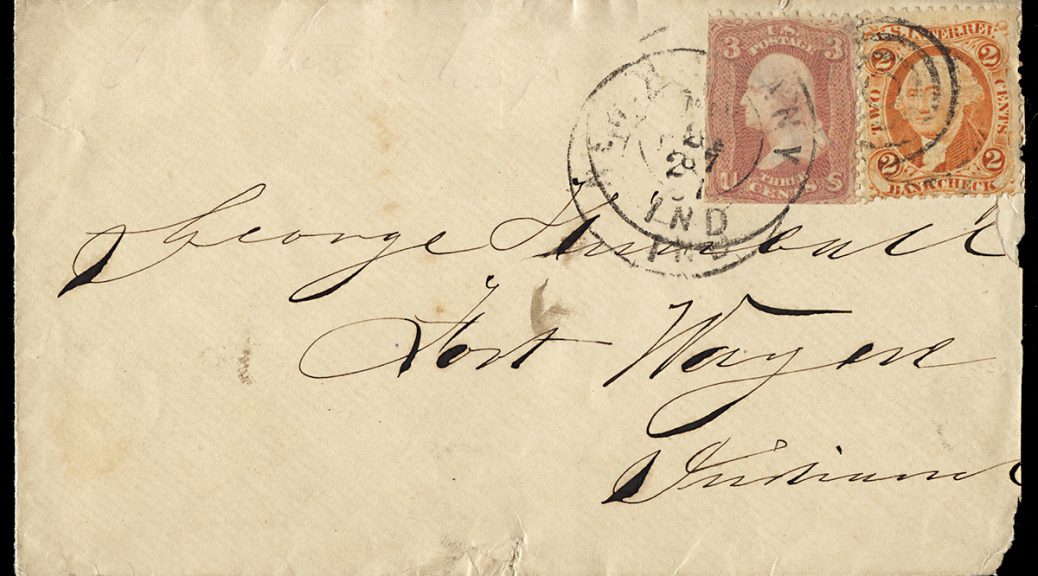
A Very Nice Civil War-Era Illegal Use Cover… and a Warning
As some may know, one of my collecting focuses is illegal/improper usages related to U.S. revenue stamps:
1. Postage stamps used as revenue stamps on documents
2. Revenue stamps used as postage on cover.
Primarily 19th century material, but also bleeding into the early 20th century.
The vast majority of my collection in this area is postage stamps used as revenues, some 200+ documents at this point. The number of covers with revenue stamps used as postage is considerably smaller, with the majority being from the Spanish-American war period or later. The number of Civil War-era covers in my collection is very small.
Not only are they very scarce, but IMO this area is a bit of a minefield with respect to authentic items. eBay is rife with sellers asking ginormous prices for covers that either (1) feature revenue stamps used far “out of period” for the revenue stamps, e.g., a 1st issue revenue stamp used in the 1890s or 20th century, or (2) there’s nothing tying the stamp to the cover so you really have no idea when the stamp was affixed. Is it original to the cover?
The out-of-period usages are generally considered philatelic in nature and IMO are NOT deserving of large premiums. They’re still interesting curiosities, but generally do not command large premiums in the marketplace.
The amount of contrived/faked covers in the Civil War material is huge. Contributing to this is the fact that many legitimate cancels of that period were nondeskript killer cancels or other geometric cancels that are easily faked. While there are genuine manuscript postal cancels from the era, determining whether a cover canceled in such a manner is legitimate is no mean task.
I pass up far more of this type of material than I ever consider purchasing either because it appears outright bogus, or more frequently, you just can’t be sure.
There’s a particular seller that has recently thrown a huge amount of this material on eBay with asking prices that are not only hugely inflated for the quality of the material in question, but it is clear they are just throwing sh*t against the wall to see what will stick. There’s no rhyme or reason to the price points from one cover to the next, and across 40-50 covers all are priced at 2 or 3 specific dollar amounts, e.g., 15 different covers spanning the 1860s to the 1930s all priced at exactly $116.75 or some other oddly specific number.
That said, like with many shovelware dealers, you can occasionally find the diamond in the rough, or more accurately the legitimate amongst the bogus.
The cover below was offered at auction and of all the seemingly similar covers the seller offered, I decided it was worth a bid.
It is a cover (slightly reduced at right) from New Albany, Indiana to Fort Wayne, Indiana. It was initially franked with a 2-cent orange Bank Check 1st issue revenue, canceled, caught, a postage stamp subsequently affixed, and canceled again.
The lower-left strike of the circular handstamp, as well as the bullseye killer tying the R6c run under the 3-cent Washington, with a subsequent strike of the same circular handstamp then tying the postage stamp to the cover.
This is the sort of “evidence” that I look for when considering these types of covers.
From user rismoney:
Out of curiousity, what ties the 2-cent orange Bank Check 1st issue revenue to the cover. To me that feels questionable.
My response:
The bullseye cancel. You can see the black ink bleeding through the 3c Washington in the image at its upper right corner. I examined it closely in-hand. If I lift up the corner of the postage stamp and look beneath, the bullseye cancel fully ties the R6c to the cover.
